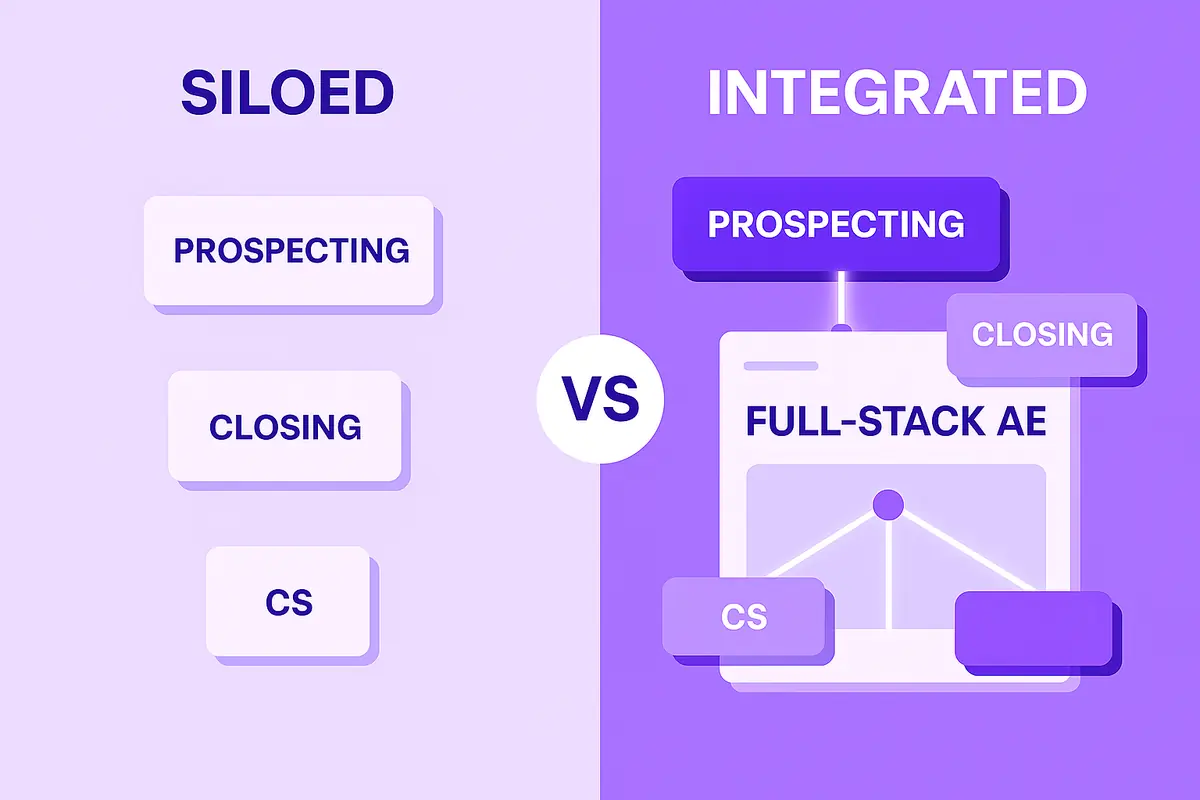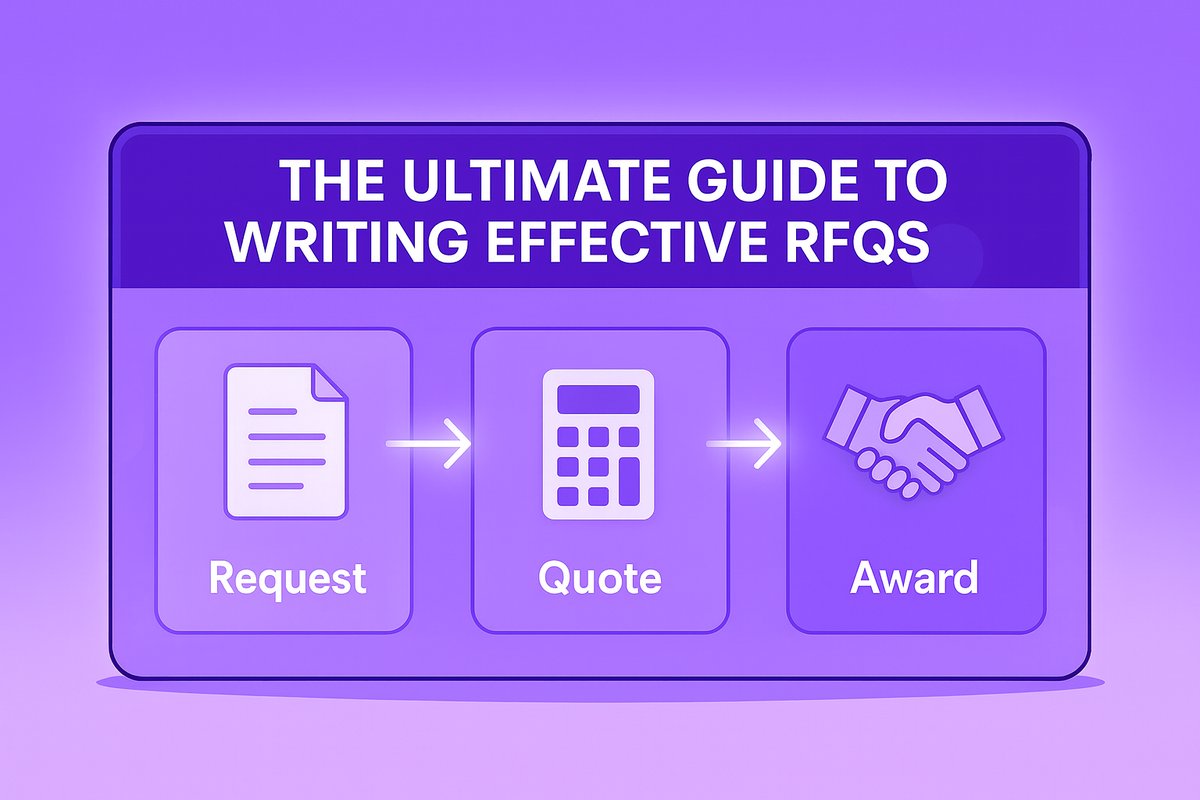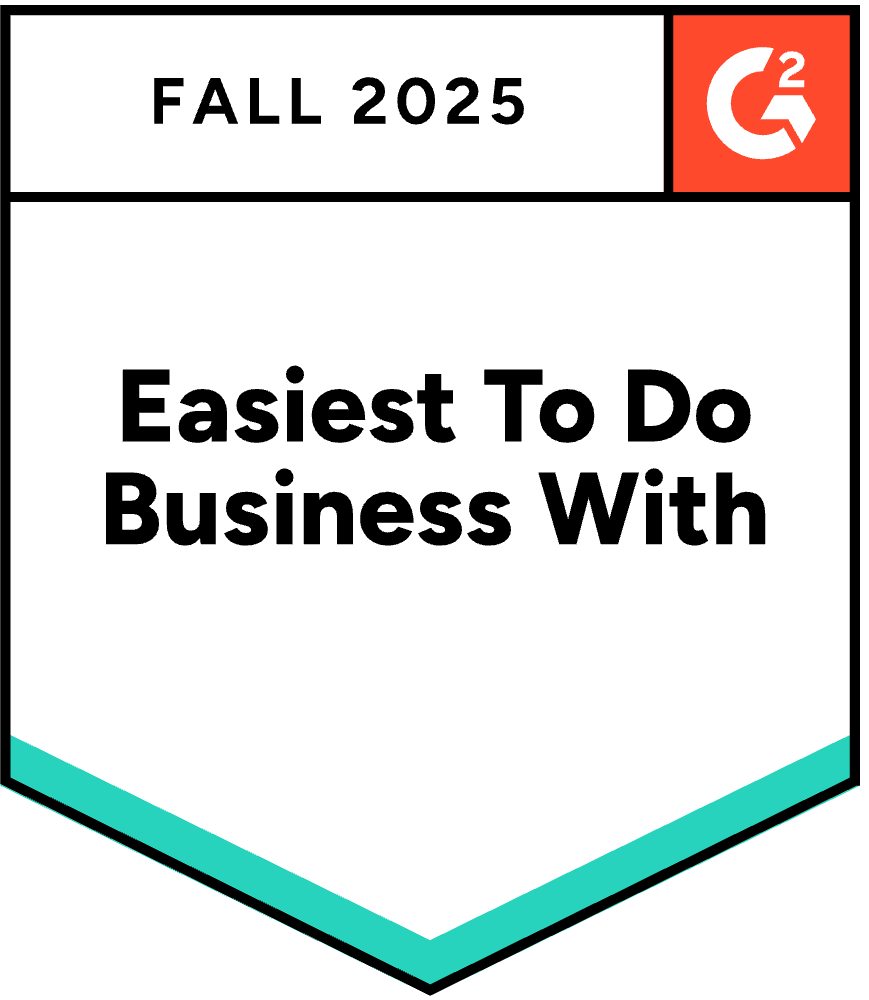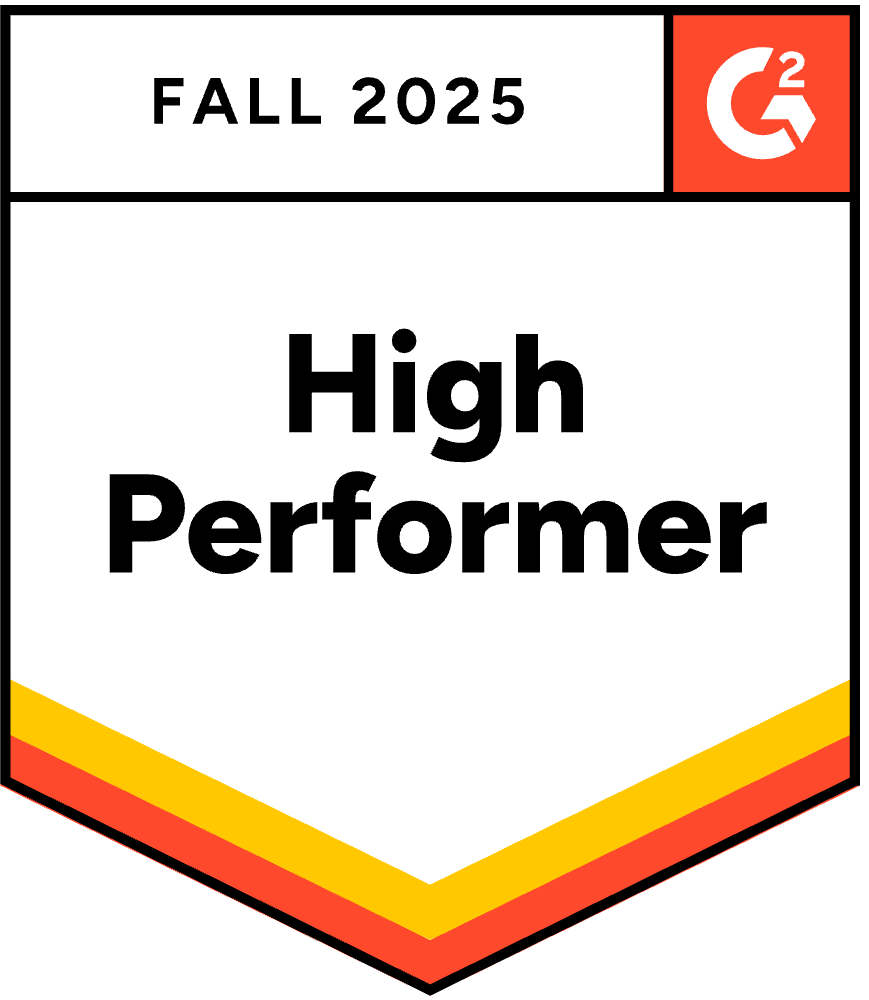The Rise of the Full-Stack AE in Modern Sales
October 23, 2024
By
Sagee Moyal

Why Full-Stack Account Executives Are the Future of B2B Sales
With increasing competition and the rapid pace of technology growth, Account Executives (AEs) can no longer rely on traditional selling tactics. The modern buyer expects more than polished pitches or generic training material. To win today, AEs must operate as full-stack sellers—armed not only with product knowledge, but also with industry expertise, buyer empathy, and the ability to leverage cutting-edge tools like generative AI.
It’s no longer enough to memorize a script or rely on scattered documents. AEs must be ready with relevant user stories, industry-specific examples, and proven success cases that resonate with buyers and demonstrate real business impact.
More Competition, Smarter Selling
The barrier to entry in technology has dropped. Cloud infrastructure, no-code tools, and API-first ecosystems make it easier than ever for new competitors to emerge. As a result, the B2B sales landscape has become fiercer and more saturated.
This shift means that the old sales playbook no longer works. Monthly SKOs (sales kickoffs), vague anecdotes, or boilerplate decks won’t cut through the noise. Buyers today are more informed and more skeptical—they do their research, compare vendors independently, and demand proof of value before committing.
To stand out, AEs must demonstrate:
- Deep product fluency – not just features, but how the solution integrates into workflows.
- Market expertise – understanding the industry trends shaping buyer decisions.
- Customer context – knowing what challenges specific roles, industries, and companies face.
Modern selling is about showing up as a consultant, educator, and partner rather than just a vendor.
Leveraging GenAI for Impact
Enter Generative AI (GenAI)—a new force multiplier for sales teams. Instead of spending hours drafting emails, analyzing data, or customizing proposals, AEs can now use GenAI to:
- Personalize outreach at scale – tailoring messaging to industries, personas, or even individuals.
- Analyze customer data quickly – identifying patterns, buying signals, and potential objections.
- Accelerate RFPs and bids – creating tailored responses faster and with fewer errors.
- Automate repetitive tasks – freeing up time to focus on strategy, discovery, and closing.
By combining their human ability to build trust with AI’s capacity for speed and scale, AEs can deliver more meaningful interactions that resonate with buyers. The result is a win-win: customers feel understood, and sales teams spend more time on the activities that actually drive revenue.
Bridging Sales and Product Knowledge
The next evolution of full-stack AEs involves becoming fluent not just in their product, but in how it’s built. Understanding the logic behind integrations, APIs, and platform workflows allows AEs to engage technical buyers with confidence. When an AE can connect product capabilities to a customer’s existing tech stack or security requirements, they instantly elevate the conversation. This technical empathy builds trust and positions the AE as a partner capable of solving complex, cross-functional problems rather than just selling software.
The Role of Data-Driven Selling
Full-stack AEs leverage data as their competitive edge. Instead of relying solely on intuition, they use analytics to identify account potential, forecast accurately, and personalize every touchpoint. By tapping into CRM data, buyer intent platforms, and revenue intelligence tools, AEs can surface insights that drive meaningful engagement. Platforms like HubSpot and Salesforce now pair with AI to automate this analysis, helping AEs spot trends before competitors do and tailor conversations around actual buyer needs.
Continuous Learning as a Differentiator
The most effective full-stack AEs treat learning as part of their job description. They don’t just attend quarterly enablement sessions—they follow industry reports, listen to customer feedback, and refine their storytelling around real outcomes. Many are turning to resources like LinkedIn Learning, Pavilion, and Iris’s own content on AI-powered sales enablement to stay sharp. In a world where products evolve monthly and AI reshapes workflows weekly, adaptability and curiosity are no longer optional—they’re what separate good sellers from great ones.
The Full-Stack Approach
So what exactly is a full-stack AE? It’s someone who blends:
- Technical expertise – understanding their product well enough to demo, troubleshoot, and connect use cases to buyer needs.
- Industry insights – staying current on trends, regulations, and challenges in their customers’ markets.
- Customer-centric storytelling – using case studies and success stories that feel relevant and specific.
- GenAI-powered efficiency – leveraging tools to speed up prep work, personalize engagement, and increase productivity.
This combination allows AEs to engage prospects more effectively, position themselves as trusted advisors, and ultimately shorten sales cycles in a crowded market.
The New Standard for Sales Success
The AEs who thrive today are those who can seamlessly integrate technology, industry knowledge, and customer-first selling. They don’t just show up with a pitch—they bring insights, context, and a clear demonstration of value. They use AI to work smarter, not harder, while still relying on the human skills of curiosity, empathy, and trust-building that no algorithm can replace.
In short:
- The market is faster.
- The buyers are smarter.
- The tools are more powerful.
To keep up, AEs must evolve into full-stack sellers who combine human connection with technological leverage. Those who do will not only survive in today’s competitive environment—they’ll lead it.
Share this post
Link copied!



















